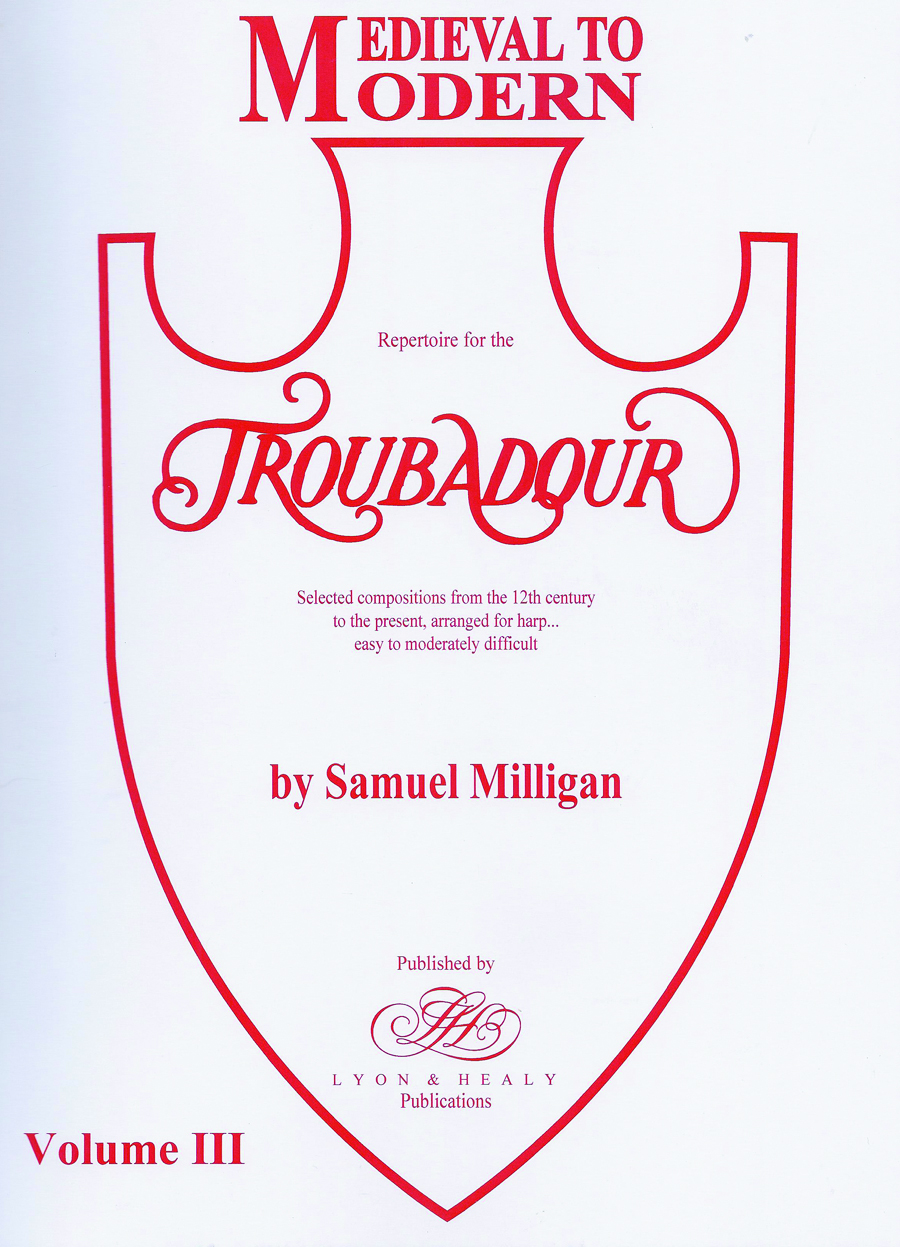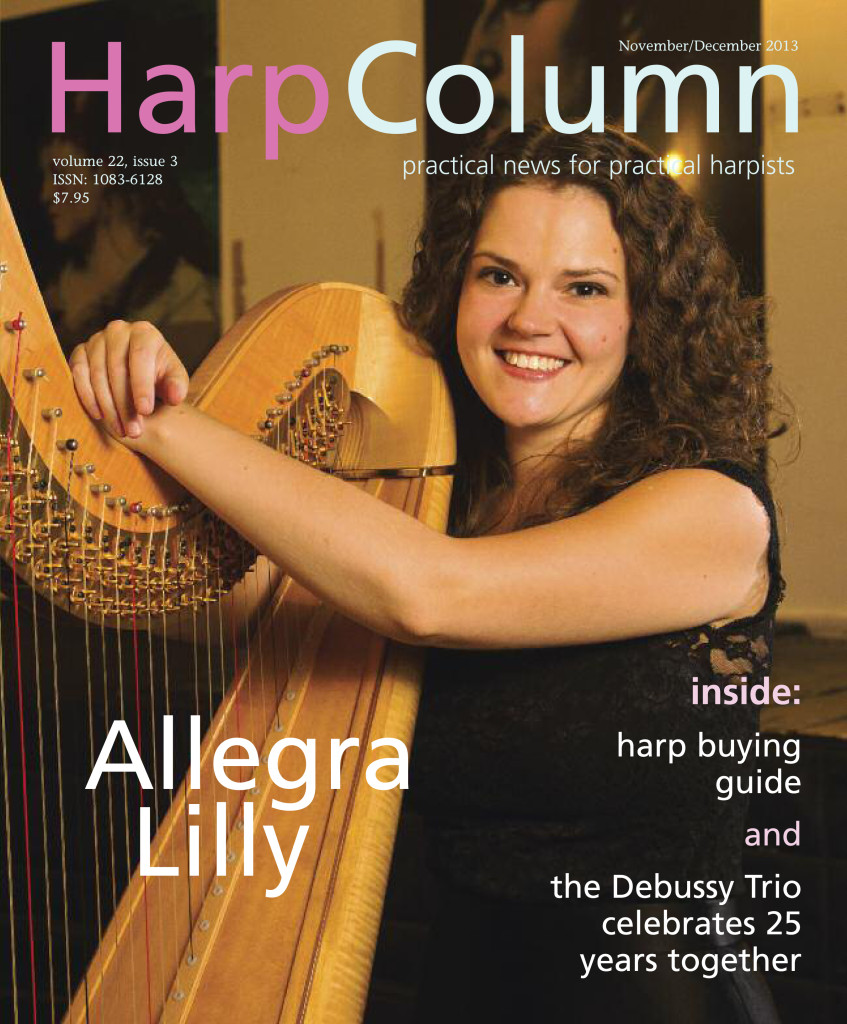
—by John Wickey
There’s an oft-repeated quote from one of Beethoven’s letters decrying the lack of distinction between the music written for the harp and the piano. The master, clearly, was all for the advancement of the piano, but the quote has been used to validate the performance of piano works from the period on the harp.
Presumably, we borrow from the piano repertoire because the music is better, or better known, but the thing that has always puzzled me is this: If the harp was so popular in Beethoven’s time and so much was being published—where, oh where, is all the harp music?
Today more than ever, there are harpists, harp historians, and publishers who are working diligently to answer this question by rediscovering titles and getting them into print and online so we can peruse and perform them. I regret that there isn’t enough space to report on more of these efforts.*
One productive publisher is the Italian company UtOrpheus, which has submitted Francesco Pollini’s Air Varié for review. The preface informs us that Pollini was a student of Mozart’s who lived and taught harpsichord in Milan, and this work from 1800 for single-action pedal harp has some of Mozart’s crispness and simplicity.
A longish introduction is followed by the simple theme, reminiscent of a hunter’s song, six variations (with an intervening cadenza), and a conclusion that causes the piece to expire gracefully rather than triumphantly close. The five-finger patterns of the first and fourth variations, where a double keyboard seems to be wanted, make it clear that the composer was principally a harpsichordist—but for a change, this is a piece for harp (also playable on keyboard).
Performed by a professional, the Air Varié could be an example of the transition of style in theme and variation compositions with less of the technical mastery required for the familiar Spohr Variations. For the teacher who desires a respite from the Naderman Sonatines, it might provide just the right antidote—plenty of scales, arpeggios, and Alberti bass.
I was looking for comparable finds for lever or folk harp, and I asked my friend Cheryl Slaughter who performs a lot of early music. She recommended Robin Arioto Fickle’s Renaissance Gems. With titles like “My Lady Hunsdon’s Puffe,” “Of All the Birds That I Doe Know,” “John Come Kisse Me Now,” and the like, I could do nought better than grab a tankard of ale and my lever harp and pretend I was a minstrel for an hour or two (in the privacy of my own home).
Robin has done a remarkable job with her collection. The arrangements are rich and the selections interesting. The arranger provides composer biographies, notes about the pieces, but most importantly, she includes suggestions for tempi and dynamics which make it much easier to shake the dust off the manuscript and bring the tunes to life.
On a pedal harp, most of the arrangements would be sight-readable by an accomplished player. On the lever harp, tuning to B-flat is required to play all of the selections without retuning, and the lever changes could make some of the pieces a challenge for those who are less nimble. Interested beginning to intermediate players might want to investigate the early music books by Deborah Friou or Nancy Hurrell.
Harpiana Publications’ editor-in-chief Dominique Piana has many projects in the works and one is to reissue the missing compositions from the late 19th and early 20th centuries by the German school of harpist-composers. These were the men such as Hôly, Posse, Snoer, and Kastner who played with the great orchestras of Austria and Germany during the time of colossal conductors such as Gustav Mahler and Richard Strauss.
A fair number of these harpists emigrated to the U.S. to play in orchestras for part of their careers and while they didn’t leave behind a large school of students, they did bequeath to us the sounds and harmonies of their times in harp music. Stylistically, these weren’t the mavericks of the avant-garde but playing the best of their pieces can be like entering a Gustav Klimt painting—all shimmering gold and sumptuous detail.
One of Harpiana’s newer reprints provides a comfortable entry point if you’ve never tried this kind of music. Alfred Kastner’s Deux morceaux faciles (Two Easy Pieces) is something of a rarity—a late romantic piece written for harp without pedals. The first movement, marked Andante, is a swaying barcarolle in 6/8 and the second, marked Allegretto, tells a simple, sweet story in 2/4. For the teacher, the principal interest is developing left-hand skills in the intermediate player—arpeggiated accompaniments, jumps, and muffling. A sixth-octave B is used a couple of times as the bottom note of an octave but if you leave that out and tune in at least two flats, you can play these pieces on a 34-string lever harp with a sixth-octave C.
Last but certainly not least, I’m thrilled to report that Lyon & Healy Publications has recently releasedMedieval to Modern Volume III arranged for harp by Samuel Milligan, the indefatigable proponent of our instrument.
Volume III provides the same kind of graded material (easy to intermediate) for lever or pedal harp that we’ve come to rely on, but the sophistication and musical satisfaction of the selections, not to mention the deft arrangements, make this volume truly remarkable.
For example, the opening piece, “Diferencias sobre La Folia” (Variations on La Folia) is based on a familiar, sorrowful, Spanish melody. The ensuing variations are each gradually more technically complicated—simple right hand replacing followed by intervals in both hands, then arpeggios, then little scales—in other words, the perfect teaching piece. Advanced harpists (you know who you are) can also safely slip this one in their gig book—it sells!
All of the selections in Volume III are worthy but I suspect that it is the imaginative inclusion of works by Canteloube, Satie, Korngold, and Messiaen, however, that will make this tome a standard for generations of new harpists to come. Bravo!
*Please visit my music stand on www.harpcolumn.com for a growing selection of my favorites. •










